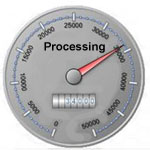 When running any network you have the option to observe its current status and diagnose any problems by reviewing your log files. You try to ensure that everything is up to speed and working correctly to the best of your abilities. When disaster strikes, you want to be ready for any obstacle your network throws at you. This is where Remote Server Monitoring comes in especially useful. When a computer on the network is being used or is broken you’ll be instantly notified by the monitoring software no matter where you are.
When running any network you have the option to observe its current status and diagnose any problems by reviewing your log files. You try to ensure that everything is up to speed and working correctly to the best of your abilities. When disaster strikes, you want to be ready for any obstacle your network throws at you. This is where Remote Server Monitoring comes in especially useful. When a computer on the network is being used or is broken you’ll be instantly notified by the monitoring software no matter where you are.
Remote Server Monitoring
There are many benefits to utilizing remote server monitoring, such as daily testing that forwards the status to cell phones. The ability for remote corrections cuts the costs of IT travel and other expenses. Modern applications allow you to monitor in real-time from smart phones and tablets. Based on your configurations, it is possible to reboot a physical computer on your network and monitoring will still resume.
Economically speaking, it is viable to install remote server monitoring on any network. IT professionals can access and diagnose a network from anywhere in the world. Expenses related to travel are eliminated while labor costs are diminished significantly. Although is savings are a selling point to using remote server monitoring, there can be a downside when considering security concerns.
Out of date monitoring software can be opening up ports on your network that are not as secure as they once were. It is always extremely important to update any network configuration often with the latest security updates and patches.
Article by Scott Huotari, President CCSI, Google | LinkedIn



